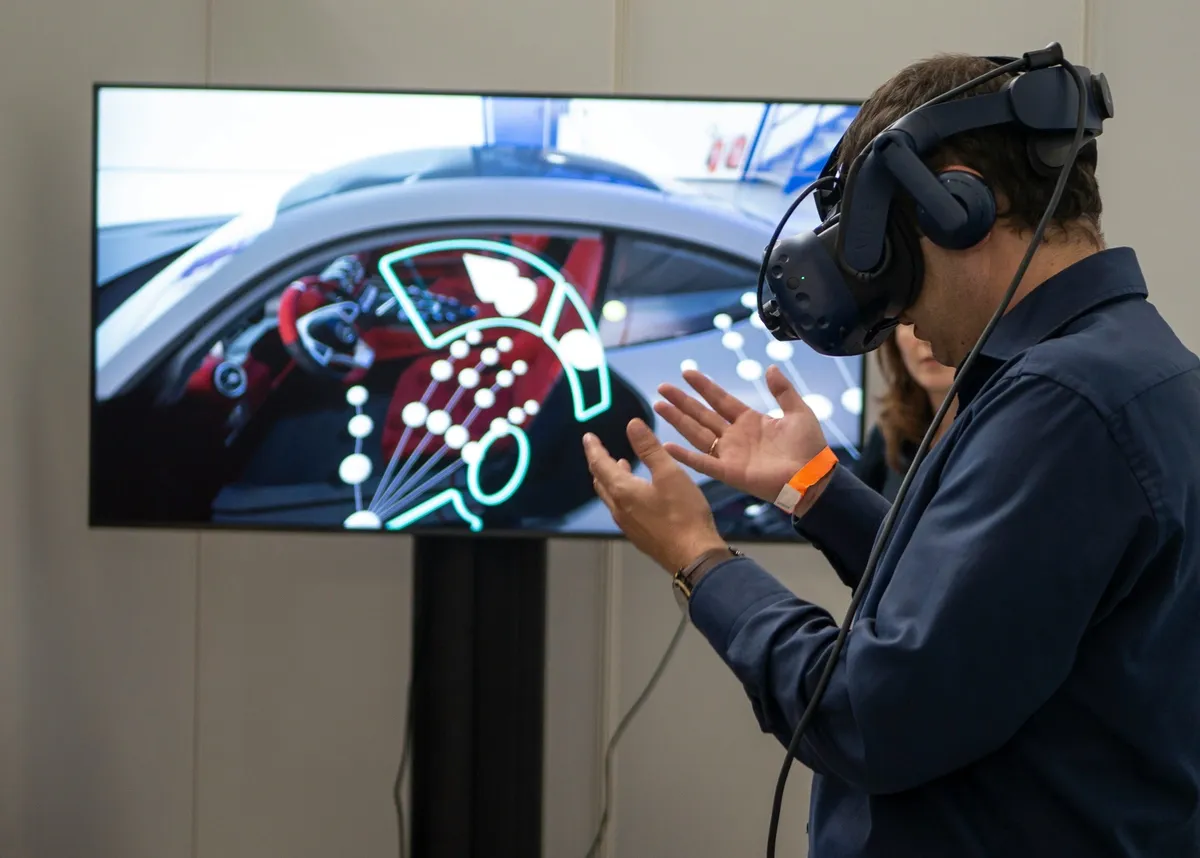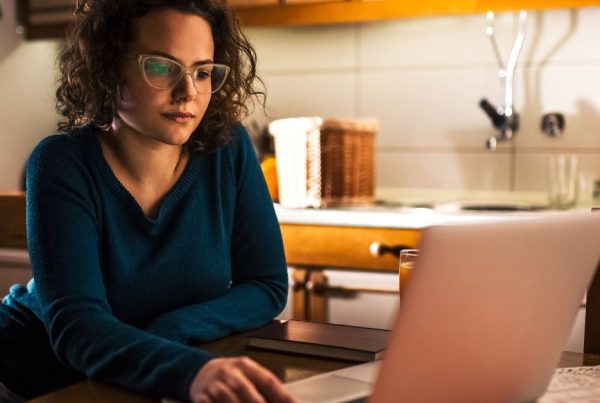
Leveraging Virtual Reality (VR) and Augmented Reality (AR) in architectural design is revolutionizing the way architecture firms approach project visualization, client presentations, and team collaboration. By creating immersive, interactive experiences, VR and AR technologies enable architects to present detailed, accurate design concepts, streamline client approvals, and enhance project coordination, ultimately leading to more efficient and innovative architectural solutions.
Enhancing Design Visualization with VR and AR
Virtual Reality (VR) and Augmented Reality (AR) technologies have significantly transformed the field of architecture, providing an immersive and interactive platform for design visualization. By shifting from traditional 2D to advanced 3D visualization, these technologies enable architects to experience and present their designs in three dimensions, offering unprecedented insights into spatial relationships and design intent (source).
VR technology creates a fully immersive environment where architects and clients can walk through highly detailed 3D models of buildings as if they were already constructed. This capability allows future occupants to preview their prospective spaces in a realistic manner, enhancing their understanding and engagement with the design. For example, architectural firm Corgan uses VR to provide clients with an immersive preview, leading to more effective and realistic design experiences (source).
On the other hand, AR overlays digital information onto the physical world, allowing architects to superimpose 3D models, textures, and annotations onto real-time camera views. This is particularly useful during the construction phase, where AR can visualize 3D models on-site, aiding in coordination and decision-making by providing contextual information about a building’s structural components or energy efficiency (source).
Several architecture firms have successfully integrated VR and AR into their workflows. Firms like Corgan have reported that VR experiences are much more realistic and immersive than traditional methods, significantly enhancing client satisfaction and understanding (source).
The benefits of VR and AR in architectural design are manifold. These technologies improve accuracy and precision in design, helping architects visualize completed structures before any construction begins, thereby reducing errors and improving efficiency. Additionally, they shorten design review cycles, cut costs, and provide clients with a more immersive and informed decision-making process (source).
In conclusion, the integration of VR and AR technologies in architectural design significantly enhances design visualization, improving client collaboration and transforming the way architectural projects are conceived and executed (source).
Streamlining Client Presentations and Approvals
Virtual Reality (VR) and Augmented Reality (AR) technologies are revolutionizing client presentations in the architectural industry by making them more engaging and interactive. These immersive technologies allow architects to transform their 2D drawings and models into three-dimensional representations, enabling clients to visualize designs in a lifelike environment. This shift from traditional 2D to advanced 3D visualization offers clients a deeper understanding of spatial relationships, design intent, and materiality (source).
Creating VR/AR models for client presentations involves using specialized software tools to develop immersive 3D models. These models can be navigated and interacted with through VR headsets or AR applications, providing a sense of scale and spatial experience that traditional mediums cannot offer. This process not only enhances the visual experience but also allows for real-time modifications and interactive walkthroughs, thereby making the design process more collaborative and responsive to client feedback (source).
Client feedback has shown that VR and AR presentations significantly speed up approval cycles. By offering a more intuitive and engaging way to experience designs, clients can make informed decisions more quickly. This leads to faster approvals and reduces the time spent on revisions and misunderstandings. For instance, architecture firms using VR/AR have reported that clients feel more confident in their decisions and are more satisfied with the design process, resulting in quicker project initiation and execution (source).
The benefits of using VR and AR in client presentations are substantial. These technologies increase client satisfaction by providing an immersive and interactive experience, improve communication between architects and clients, and expedite the decision-making process. This not only enhances the overall client experience but also contributes to more efficient project timelines and cost savings (source).
In conclusion, VR and AR technologies are transforming the way architectural presentations are conducted. By making presentations more engaging and interactive, these technologies facilitate quicker approvals, heightened client satisfaction, and more effective communication, ultimately leading to more successful project outcomes.
Improving Project Coordination and Collaboration
The integration of Virtual Reality (VR) and Augmented Reality (AR) into architectural design is revolutionizing project coordination and collaboration. These technologies enable architects, designers, and stakeholders to work together in a more interactive and efficient manner, improving overall project outcomes.
VR and AR technologies create immersive 3D models that transcend conventional visualization methods, allowing team members to delve into the details of a project. This immersive experience fosters a deeper understanding and informed decision-making among stakeholders (source). By providing a virtual environment for collaboration, VR can simulate potential challenges and address them before construction begins, ensuring a smoother and error-free execution phase.
One of the significant advantages of VR and AR is their ability to facilitate remote collaboration. These technologies enable virtual meeting rooms and shared virtual spaces where team members can collaborate on complex projects, regardless of their physical locations (source). For example, Foster + Partners utilized VR to design the Bloomberg European Headquarters in London, allowing architects and clients to walk through the virtual building, resulting in a more refined design. Similarly, Zaha Hadid Architects used VR in their design process for the 520 West 28th Street residential building in New York, providing clients with an immersive 3D experience of the proposed spaces.
AR and VR also enhance on-site project management by overlaying project information onto real-world environments. This capability provides a tangible connection between digital insights and physical spaces, aiding in coordination and decision-making during the construction phase. For instance, AR can display accurate images with the entire space’s recreation, eliminating the need for relying on manually recorded measurements or drawings, leading to increased accuracy and efficiency (source).
The benefits of using AR and VR for project coordination and collaboration are manifold. These technologies streamline workflows, enhance team collaboration, and enable more efficient project execution. By providing a platform for real-time interaction and decision-making, they help in identifying and addressing potential issues early in the project lifecycle, ultimately saving time and money.
In conclusion, AR and VR technologies are transforming the architecture industry by improving project coordination and facilitating remote collaboration. These technologies not only streamline workflows but also foster better team collaboration and more efficient project execution. Minute7, as a time tracking and expense reporting solution, fits perfectly into this new landscape by providing a platform that conveniently allows project stakeholders to enter time and expenses from various devices, ensuring accessibility and convenience for teams of all sizes. Thus, Minute7 can be seen as an essential tool for firms leveraging AR and VR for their architectural projects.
The Future of Architectural Innovation with VR, AR, and Minute7
As architecture firms continue to adopt Virtual Reality (VR) and Augmented Reality (AR) technologies, the potential for innovation in design, client engagement, and project management becomes increasingly apparent. These cutting-edge tools not only enhance visualization and streamline client presentations but also foster improved project coordination and collaboration. By integrating VR and AR, architecture firms can deliver more accurate, immersive, and efficient design solutions, leading to higher client satisfaction and better project outcomes.
Minute7 complements this technological advancement by offering a robust time tracking and expense reporting solution that seamlessly integrates with QuickBooks. For architecture firms leveraging VR and AR, Minute7 ensures that project teams can easily manage their time and expenses from any device, whether in the office or on-site. This seamless integration supports the efficient workflows and real-time collaboration that VR and AR technologies promote.
In a world where architectural innovation is driven by VR and AR, Minute7 stands out as an essential tool for managing the complexities of modern design projects. By providing a platform that enhances accessibility and convenience, Minute7 helps architecture firms maintain the meticulous oversight required for successful project execution. As architecture continues to evolve with the integration of VR and AR, Minute7 will remain a critical partner in supporting firms to achieve their goals and deliver exceptional results.



